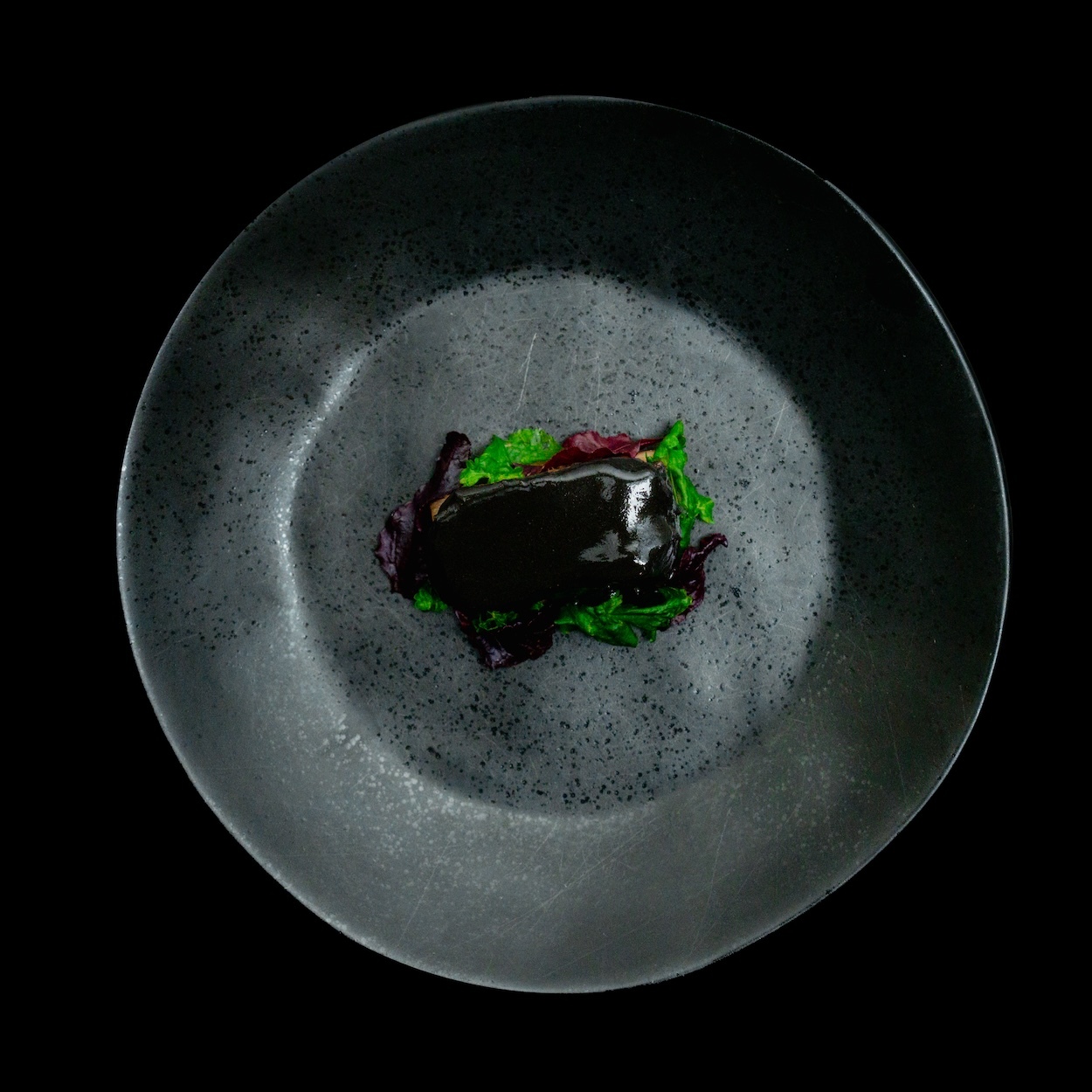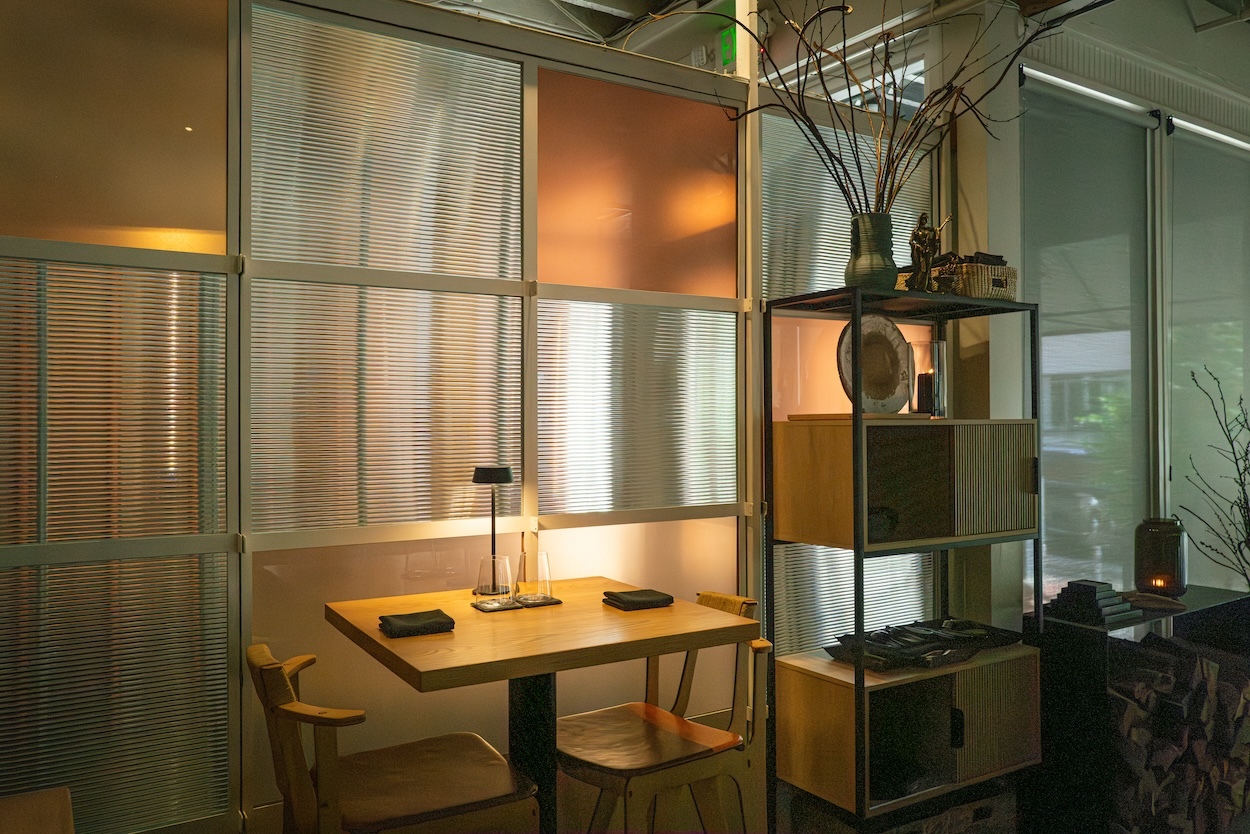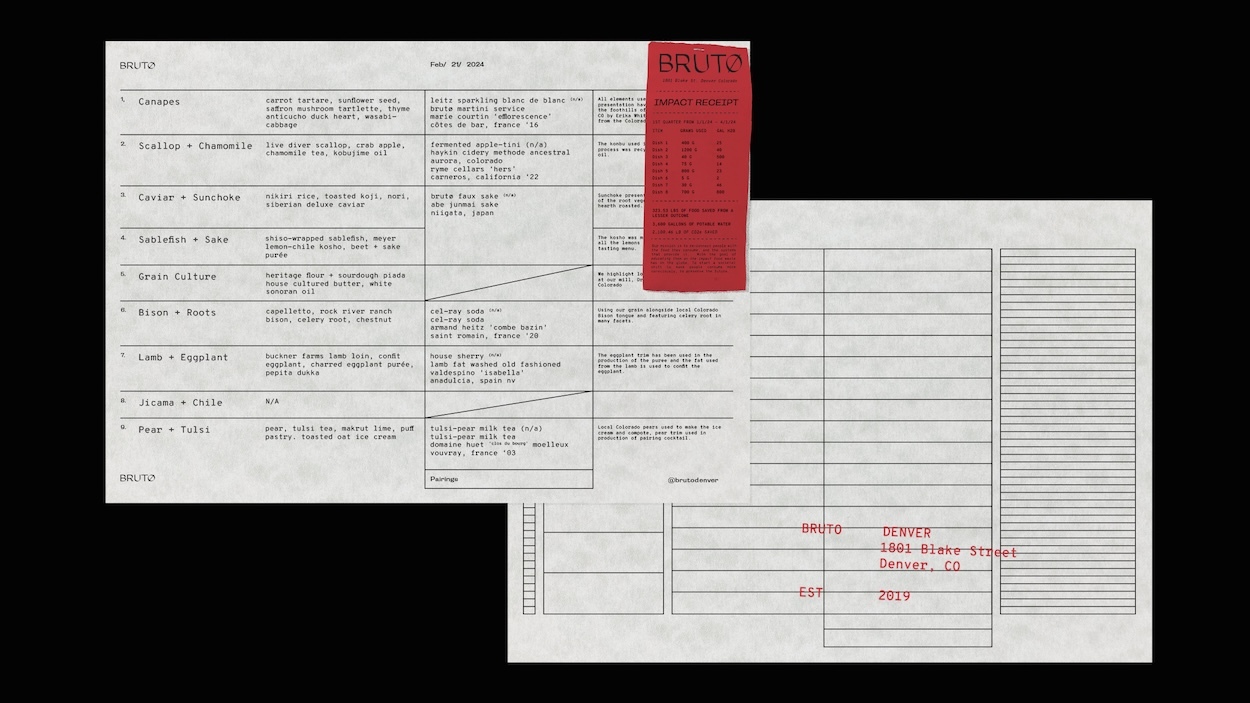Stark slabs of béton brut might not seem particularly appetizing, but Id Est’s Kelly and Erika Whitaker would disagree. The James Beard Award–winning restaurateurs behind Denver’s celebrated Brutø distilled the architectural movement’s core tenets into an 18-seat chef’s counter that champions minimalism at every turn, from a snug dining room focused on a concrete oven from Naples to a low-waste culinary approach that earned a coveted Michelin Green Star. As Brutø was nearing its five-year milestone, though, the Whitakers were itching for a rebrand.
With the help of creative studio Wunder Werkz, they leaned even deeper into the brutalist theme.“They were going through an evolution of staff and program after winning their Michelin stars and asked us to think outside the box and really consider the intersection of brutalism in cooking, design, and architecture,” says Wunder Werkz partner John Hartman. So the firm created an entire suite of graphics and experiences conveying the spirit of brutalism that now informs the entire restaurant’s identity, from the website and menu to interior finishes.
Replicating the dining room’s snug footprint, the website utilizes a single page that displays everything from their manifesto to information about key staff members, like newly hired executive chef Byron Gomez of Top Chef fame. His prix-fixe tasting menu couldn’t be more on theme—the fully black Colorado lamb with squid-anise caramel and confit eggplant resembles a delicate lump of coal. Yet it glimmers thanks to the dining room being encircled mostly by tinted glass walls that lend an ambiance of seclusion and bring the light in from within Denver’s spacious Free Market. “We consider ourselves a studio that is agnostic of materials, methods and mediums,” Hartman says. “Because of this, BRUTØ’s brutalist philosophy opened up endless visual and spatial design possibilities, allowing us to create something beautifully restrained and expertly crafted using humble materials.”
The entire Brutø experience could be considered a keepsake, but diners are encouraged to take menus home and reflect on the meal—they’re printed on pulpy gray recycled paper and adorned with a simplistic grid that communicates the chef’s thinking behind each dish. The cherry on top? An “impact receipt” that totals not only the meal’s cost, but the restaurant’s sustainability practices: water savings, waste reduction, and how it all factored into each individual meal. “Everything, from the menu to the receipts,” Hartman says, “was created with honesty and function in mind, helping give guests a deep understanding of Brutø.”




